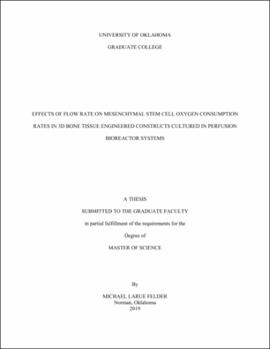| dc.description.abstract | Bone grafts comprise a multibillion dollar industry, with over a million grafts occurring each year around the world. These grafts are commonly autologous or allogenic. Autologous grafts are taken from the patient, and are sourced from a donor site from the patient’s body. Allogenic grafts are derived from a cadaver donor. Each of these graft types are associated with issues such as donor site morbidity in autologous grafts and immunological response in allogenic grafts. Bone tissue engineered constructs are a logical approach to combat the issues commonly encountered with current autologous and allogenic bone grafting techniques. While it is possible to grow bone tissue engineered constructs in vitro, it is necessary to destroy the construct to determine the number and type of cells present. Recent work has led to the development of models that have the potential to predict the number and types of cells within the construct through metabolite monitoring. The metabolites, such as glucose and oxygen, are used to monitor cell growth while the construct remains in the bioreactor, eliminating the need to lyse cells and destroy the scaffold. This allows for the development of quality assurance methodologies that are explicitly utilized on the specific graft to be used on a patient. These models, however, neglect to account for factors affecting the construct, such as flow rate and scaffold geometry. This study aimed to determine the flow characteristics present within the bioreactor system, and hoped to quantify the effects of these characteristics on oxygen uptake rates of mesenchymal stem cells. The work done utilized a residence time distribution analysis using an easily monitored dye to develop residence time distribution functions, and associated these functions with literature values to characterize the flow patterns and residence times of media moving through the construct. Findings indicate that flow within the bioreactor system is well approximated by linear tubular flow reactors, associated with gradients in the radial direction at low flow rates. Additionally, oxygen uptake rates of stem cells in these conditions have a strong linear correlation with residence times of media in the cassette, providing the data needed to develop a predictive model for oxygen uptake rates. These models also show promise for providing corrective functions for on-line oxygen monitoring systems in current bioreactor designs. | en_US |

